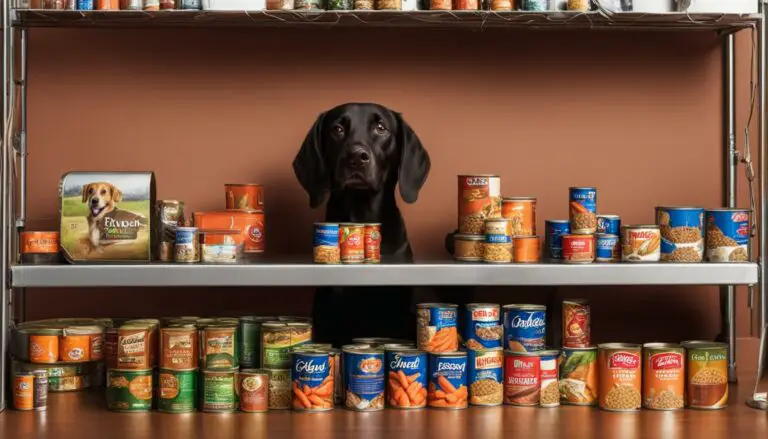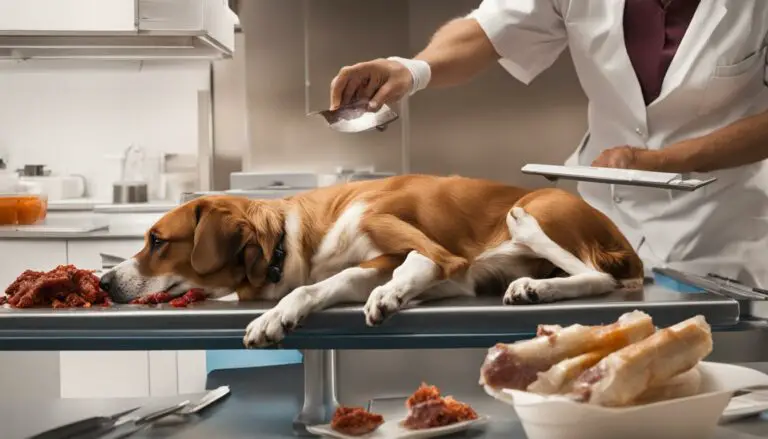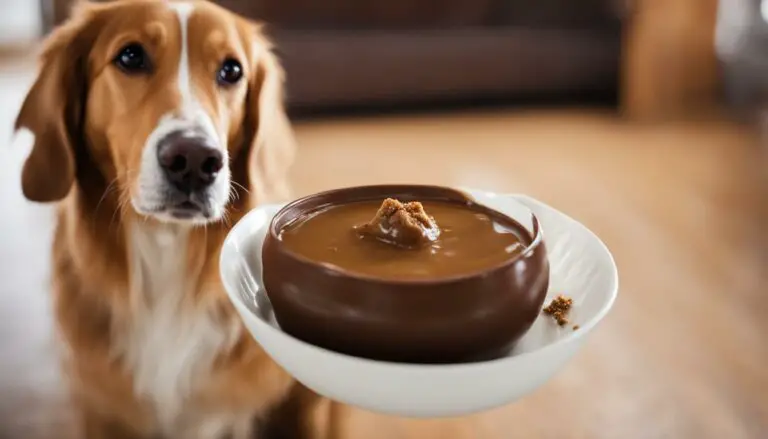Your Guide To Understanding Canine Chocolate Toxicity
Most of us humans have a love-hate relationship with chocolate, loving the taste and hating that too much of that love can create weight issues.
A similar situation exists for the dog world, but, in their case, they hate part isn’t that they’ll get fat.
Their canine bodies hate chocolate because it can make them sick, even deathly sick.
It’s hard to watch the pleading eyes of your canine pal as you go about your chocolate diet in moderation or feast on Christmas chocolates, and we all know that curious pups are always likely to get into your chocolate stash if you leave it accessible.
So, you’re left to ponder a plethora of dog and chocolate questions. How bad is chocolate for dogs? Can dogs eat chocolate in moderation, too?
Why is chocolate so bad for dogs? Are there any chocolate types my dog can eat safely?
Let’s explore some of the common questions dog owners may have when it comes to their beloved pet and eating chocolate.
Can Dogs Eat Chocolate?
According to ASPCA, or the American Society for the Prevention of Cruelty to Animals, chocolate is a people food to avoid feeding your pets. They list chocolate as one of the top 14 foods to avoid feeding your pet.
In the event of poisoning, ASPCA suggests that you should document the amount consumed and contact either the ASPCA poison control center or your local veterinarian.
Is There Any Safe Type Of Chocolate For Dogs To Eat?
While ASPCA lists all chocolate as substance dogs shouldn’t eat, they do specify that some types of chocolates are more harmful than others.
White chocolate is the least toxic, milk chocolate is less toxic than dark chocolate, and baking chocolates are the most toxic. Bottom line is that there aren’t any safe chocolates for dogs.
This is true regardless of the breed, size, and gender of the dog, although size does play a role in just how toxic chocolate is for the dog.
Why Is Chocolate So Toxic To Dogs?
Ahna Brutlag, DVM, MS, DABT, DABVT, Associate Director of Veterinary Services, Pet Poison Helpline explains that dogs are unable to properly metabolize a chemical in chocolate called theobromine, which is also in caffeine.
The resulting diuretic, heart stimuli, smooth muscle relaxant, and blood vessel dilation effects of theobromine are too much for a dog’s tiny body.
How Much Chocolate Is Toxic For Dogs?
Chocolate is actually also toxic to humans in very large amounts of around 1000 mg per kg of body weight.
Chocolate’s toxic effects have to do with how much is ingested in comparison to body weight, and, clearly, most dogs weigh far less than the average human, which means that it takes far less chocolate to overload a dog’s metabolism than it does a human.
It’s also important to remember that different types of chocolates have different amounts of theobromine in it. So, the toxicity of chocolate for dogs depends on three factors:
- The dog’s body weight.
- The type of chocolate the dog consumed.
- The amount of chocolate the dog consumed.
The multiple facets involved make it difficult to determine just how much chocolate would make your dog sick.
There’s a handy chocolate toxicity meter available at PetMD. It allows you to enter the dog’s weight, type of chocolate, and the amount consumed so that you can determine your specific dog’s toxicity risk.
How Long Does It Take For The Side Effects Of Chocolate To Show In A Dog?
Tina Wismer, DVM and medical director of the Animal Poison Control Center at ASPCA explain in a WebMD article that it can take up to 12 hours for the initial symptoms of chocolate toxicity in dogs to show up.
Theobromine has a long half-life, which means that the symptoms may last up to 72 hours, especially when accompanied by dehydration that causes less frequent urination and the toxic chemical left to run amuck in the dog’s system.
Can A Dog Die From Eating Chocolate?
Yes, both directly and indirectly. It’s important to note that large amounts and/or small dogs may suffer sudden cardiac arrest, especially if a cardiac condition already exists, and respiratory failure with little or no warning signs.
There are also many secondary effects of chocolate toxicity that may be lethal to your pet, such as aspiration pneumonia from frequent vomiting.
Multiple research studies have pointed to chocolate as the number one cause of dog poison deaths.
Can A Dog Recover From Eating Chocolate?
With prompt recognition and supportive treatment, some dogs may make a full recovery from chocolate poisoning.
The severity all depends on the three facets discussed earlier – amount, type, weight.
Milk chocolate in tiny amounts may cause nothing more than a short-term upset stomach for most dogs.
Whereas, even a larger dog getting a baking bar of dark chocolate in his tummy may not recover from the respiratory and cardiac impacts of chocolate toxicity. Of course, the dog’s age and general health play a vital role in recovery.
Older dogs and those with preexisting respiratory, kidney, and cardiac conditions have a greater probability of not making a full recovery following having their central nervous systems hijacked by the stimulant effect of chocolate.
Response time is also a consideration. Dr. Wismer tells WebMD that pet owners shouldn’t hesitate to call their local poison control or vet since early treatment is instrumental in the dog’s recovery and the overall expense to the pet owner in terms of the treatment cost.
In the same WebMD article, the president of Reidsville Veterinary Clinic in North Carolina, Joseph Kinnarney, DVM, says that most dogs survive chocolate poisoning due to the swift actions of their owners.
What Should You Do If Your Puppy Is Poisoned by Chocolate?
Puppies are smaller in size and can tolerate very little chocolate before it reaches a poisoning and toxic level.
Veterinarians recommend that poison control or a veterinarian’s office is called immediately if a puppy consumes any amount of any type of chocolate.
What Symptoms Might A Dog Experience After Eating Chocolate?
Early symptoms of chocolate poisoning may include any of the following:
- Excessive thirst
- Vomiting
- Diarrhea
- Restlessness, pacing, hyperactivity
- Panting without the presence of heat
- Tremors
- Seizures
- Coma
- Death
What Should Owners Do When They Know Their Dog Has Consumed Chocolate?
As mentioned earlier, quick action will be instrumental in your pet’s outcome. Try to determine how much and what type of chocolate was consumed by the dog; if not known, immediately call your local vet for further instructions.
If known, then you can use the toxicity meter and your dog’s overall health to determine if immediate treatment is most prudent or if you’ll a just have to clean up a little vomiting and diarrhea from a tiny amount of chocolate consumption.
What Is The Treatment For Chocolate Poisoning In Dogs?
Your vet will need to examine your dog, and treatment will depend on the toxicity level and symptoms the dog experiences.
Blood tests, an ECG, and urinalysis will help determine what treatment is most appropriate.
In most cases, your dog will begin to remove the chocolate from their system on their own through bowels, bladder, and vomiting.
Your vet may decide to assist this process by inducing vomiting with medications or pumping the stomach.
Activated charcoal may be administered by the vet to help block the absorption of the theobromine.
It may be administered multiple times over the first 24-hours to prevent recirculating theobromine from being absorbed.
IV fluids may also be administered for dehydration and to help promote urination to evacuate theobromine from the dog’s system.
Cardiac function is also carefully monitored. The vet may need to administer medications to slow the dog’s heart rate down. Seizures may also require medications.
Is There First Aid for Chocolate Poisoning?
The AMVA, or, American Veterinary Association, recommends that all pet owners know basic pet first aid procedures so that they can avoid panic and offer their sick pet the most applicable and expedient care, but they caution that such early first aid care should never substitute a thorough medical exam by a vet following a pet emergency. They also recommend having a pet first aid kit ready to go.
When you call poison control or your vet with dog chocolate poisoning, you may be instructed to initiate getting the theobromine out of your pet immediately by giving him/her Ipecac syrup or a solution of hydrogen peroxide.
Should the dog stop breathing or suffer cardiac arrest, you’ll need to know pet CPR and rescue breathing techniques.
There are a plethora of videos to help you learn about how to create a comprehensive pet first aid kit and be prepared should a dog suffer a chocolate poisoning event or any other medical emergency. Here’s one to get you started:
Why Do So Many Dogs Manage To Eat Chocolate?
Research has shown that dogs suffer more chocolate poisoning events than cats, which is thought to be due to a cat being a much more pickier and light eater.
A dog, however, can eat an entire chocolate cake, Christmas candy platter, or box of chocolate cookies in the blink of an eye.
In a LiveScience article, titled “These Seven Foods Cause The Most Food Deaths” researchers found that chocolate poisoning episodes in dogs frequently happen around holidays like Christmas, Easter, and Valentines.
This is because there’s a higher amount of chocolate products in the home for the dog to access during these times.
Even though it may be a special occasion, remember what to do if your dog eats your Christmas chocolates because it’s never worth the risk to your dog’s health to eat chocolate.
Owners that have their own addiction to chocolate increase the risk of their canine companions wanting and finding chocolate.
Stale and half-eaten chocolate treats also typically go in the garbage. Dogs sniff it out and have no qualms adopting the adage of one man’s trash is another man’s treasure.
The dog has no idea that the substance is harmful; it simply is a delicious find.
How To Prevent Your Dog From Eating Chocolate?
Begin by addressing your food habits. Do you leave chocolate out for guests? Do you leave your own treats in pet accessible areas? Do you trash half-eaten chocolate items?
If so, remove these risks from where your pet has access.
Do you encourage your pet to hunt chocolate? Allowing your dog even the slightest taste of chocolate, no matter how pleading those eyes may be, will encourage them to seek and eat it in their own version of moderation, which is none.
Adopt a zero-tolerance for anyone feeding your dog chocolate of any sort.
Watch any children eating around the dog. Children do not understand the ramifications of chocolate toxicity for dogs.
Be sure to educate them on the subject and monitor for any chocolate handouts or inadvertent crumbs.
Be mindful of odd products that contain chocolate, such as cocoa shell mulch. It has a very sweet smell that attracts the canine nose. It also contains the same toxin that’s in food-source chocolate.
The American Kennel Club, or AKC, recommends teaching your dog “leave it.” Training your dog to not go after ground food can keep your dog safe from chocolate and all the other toxic people foods.
What Can You Do To Help Your Vet?
You can follow the directives above in keeping your dog and chocolate separated, knowing dog first aid skills and having a dog first aid kit available, seeking immediate medical advice or attention during suspected dog chocolate poisoning events, and the knowing the signs and symptoms of chocolate poisoning.
In the event, your dog eats chocolate, remain calm and collected all the information you need to help your vet make a quick diagnosis and initiate appropriate treatment.
Taking the time to assess what type of chocolate your dog ate and how much he ate can help your vet tremendously.






